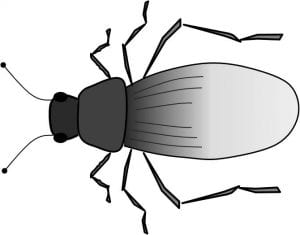I began working on diversity partitioning during my post-doc time at Miami University (Oxford, OH). Diversity partitioning is an analytical method for decomposing gamma-diversity into components representing alpha- and beta-diversity. Gamma-diversity is the cumulative diversity (typically species richness) within a set of samples; sometimes it is thought of as representing a pooled or regional diversity. Alpha-diversity is the diversity (e.g., species richness) WITHIN a sample and beta-diversity is the diversity AMONG samples. The sample could be a plot of ground wherein data on plant species abundances are recorded, a grid or transect of Sherman traps intended to sample an assemblage of rodents at a particular study site, grid or transect of pitfall traps for sampling ground-dwelling arthropods, a point-count of birds at a particular location, samples of fish or aquatic invertebrates from a pond, lake, or stream …. and there are countless other examples. In diversity partitioning, alpha is actually the mean within-sample diversity and beta is the mean diversity not found within any one (random) sample. There are two different versions of diversity partitioning: additive and multiplicative. In the former, alpha and beta sum together to determine gamma; in the latter, gamma is the product of alpha and beta. More importantly, researchers typically measure (get data for) alpha and gamma and then derive beta as: beta = gamma – alpha (additive) or beta = gamma/alpha (multiplicative).
When I was a post-doc at Miami University, Tom Crist and I collaborated on developing statistical techniques for applying tests of significance to alpha and beta estimates, particularly when these derive from a hierarchical sampling framework (see Veech_etal_2002_Oikos, Crist_etal_2003_AmNat). At the time, Jon Gering (formerly at Truman State University, now at Bethel College in Kansas) and Keith Summerville (now at Drake University) were Ph.D. students in the lab and they contributed datasets to help us further develop and apply the technique (see Gering_etal_2003_ConBio, Summerville_etal_2003_ConBio). We also obtained funding from NSF to develop a software package, called PARTITION. The first release was in 2004 and the most recent, PARTITION 3.0, in 2009. The software has been downloaded and used by thousands of researchers. Tom and I no longer have a download site for the software; however, anyone wishing to get a copy can email me.
I keep PARTITION 3.0 and related documents (including a user’s manual) in cloud storage. Contact me for directions on access.
My last major papers on diversity partitioning came out back in 2010 (see Veech_Crist_2010a, Veech_Crist_2010b). In recent years, I have not worked that much on diversity partitioning nor have I used the method that much. The development of methods to analyze species diversity (including phylogenetic and functional diversity) has become a huge arena of ecological research in the past 10 years. Although I’m not directly contributing to this literature as much as I once did, I am still very much interested in methods of diversity analysis and applying such methods to conservation goals. I try to “keep up” in this research arena by reviewing papers that others have written.

